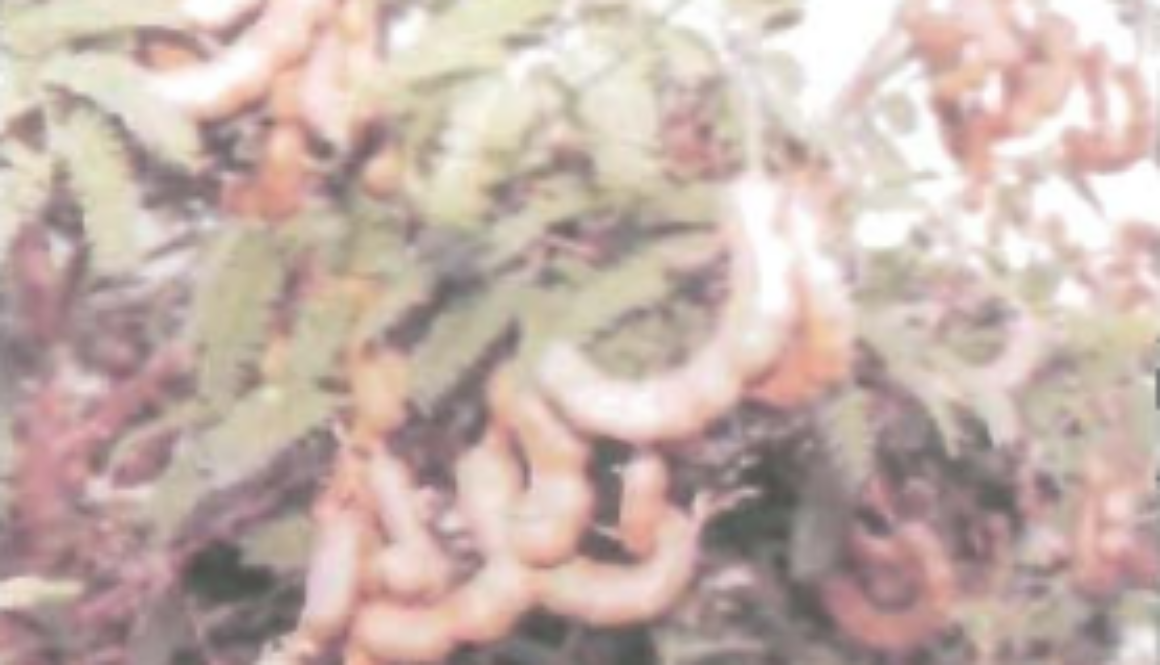Tamarind tree(Aamli)
Commonly found in moist alluvial plains and near wells, now cultivated for its edible fruit pulp. A medium sized to large evergreen tree with thick trunk and dense spreading crown of green foliage. Leaves paripinnate, have 10-20 pairs of glabrous leaflets. Flowers small, white with reddish stripes. Pods are irregularly constricted between seeds, slightly curved, compressed and pale brown in colour. Seeds obovate, oblong compressed, dark brown and
smooth. Flowering and fruiting in February to November onwards.
Part used: Fruit Pulp, Flower, Seed and Leaf
Usage: Fruit pulp is used in traditional system as a refrigerant, digestive, carminative and laxative. Infusion of pulp is useful for loss of appetite. Juice prepared from fruit pulp is very beneficial in heat stroke and fever.
Poultice of fresh leaves is applied over swellings, bleeding piles and boils. Infusion of leaves gives cooling effect in bilious fevers. Powdered seed is used to treat chronic diarrhoea, dysentery and jaundice. Poultice of flower is used to treat inflammations and conjunctivitis. Seed kernel is used as a mild purgative and stimulant. The stem bark is also applied to sores and boils.
Agrotechniques : It can be propagated by seed or vegetatively and transplanted during July at 10m x 10m. First irrigation after transplantation and summer irrigation with weeding is necessary up to three years. Ripe fruits picked up 2-3 times in a year and sun dried for 5-7 days so that pulp gets detached from the outer shell and
separates easily

